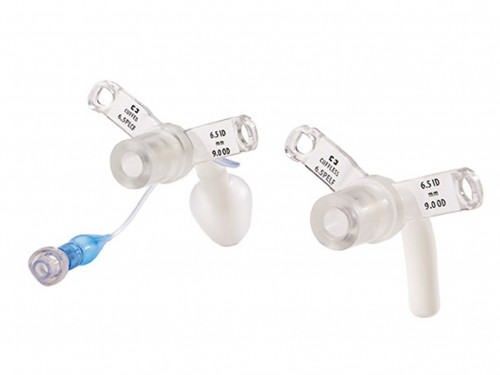Shiley™ Neonatal and Pediatric Tracheostomy Tubes
Overview
Clinician-inspired solutions
Shiley™ neonatal and pediatric tracheostomy solutions incorporate a wide range of simple and smart design advances to improve the healthcare experience for both patients and clinicians.
Our portfolio offers innovative cuffed and cuffless options, in a variety of sizes, with designs tailored to the needs of neonatal and pediatric patients.
These clinician-inspired solutions include:
- Flange distinction for neonatal or pediatric patients
- A unique pediatric cuff design
- Comfort recess on the bottom of the connector to help reduce inferior stoma irritation
- Transparent soft flange that supports patient comfort and visualization of the skin below
- Softer material and expanded size options, compared to previous Shiley™ tracheostomy products
These products are manufactured with a non-DEHP plasticizer. This new material has been incorporated into the soft, transparent flange that allows for enhanced visualization of the underlying skin and stoma site.
Features
Clinician-inspired solutions that meet patient-specific needs
Non-DEHP material
- Shiley™ tracheostomy solutions meet the latest safety standards, offering tubes that are manufactured with a non-DEHP plasticizer material.
Soft, clear neck flange
- The Shiley™ tube's transparent flange allows for enhanced visualization of the underlying skin and stoma site.
Varying flange angles
- Shiley™ tracheostomy solutions are manufactured with varying flange angles to help provide a better fit for infants and children as they grow.
Comfort recess
- Shiley™ tracheostomy tubes include a comfort recess designed to help reduce pressure on the patient’s skin.
Tape tie recess
- The flange on a Shiley™ tracheostomy tube includes a recess to make insertion of a tape tie or tracheostomy tube holder simple and to reduce contact with the patient's skin.
Child-safe pilot balloon
- Includes plastic housing around the tip of the inflation lumen that prevents the ability of placing the inflation lumen into the 15 mm connector of the tracheostomy tube, which could obstruct airflow.


